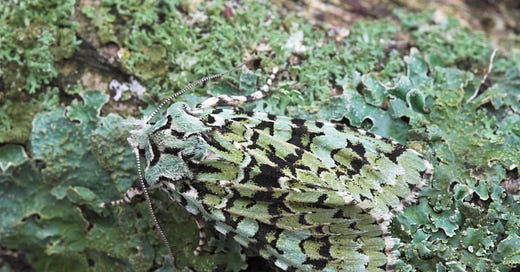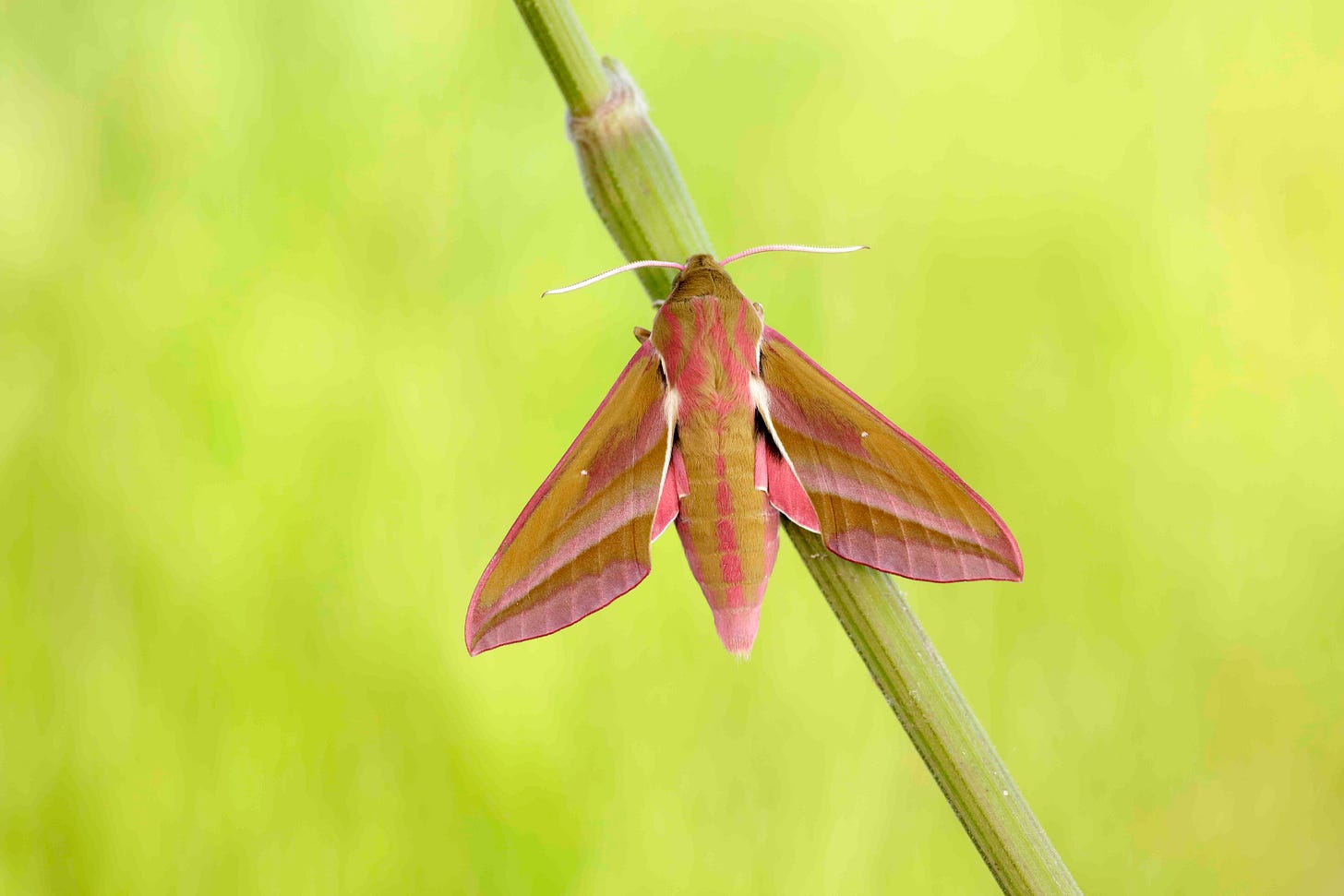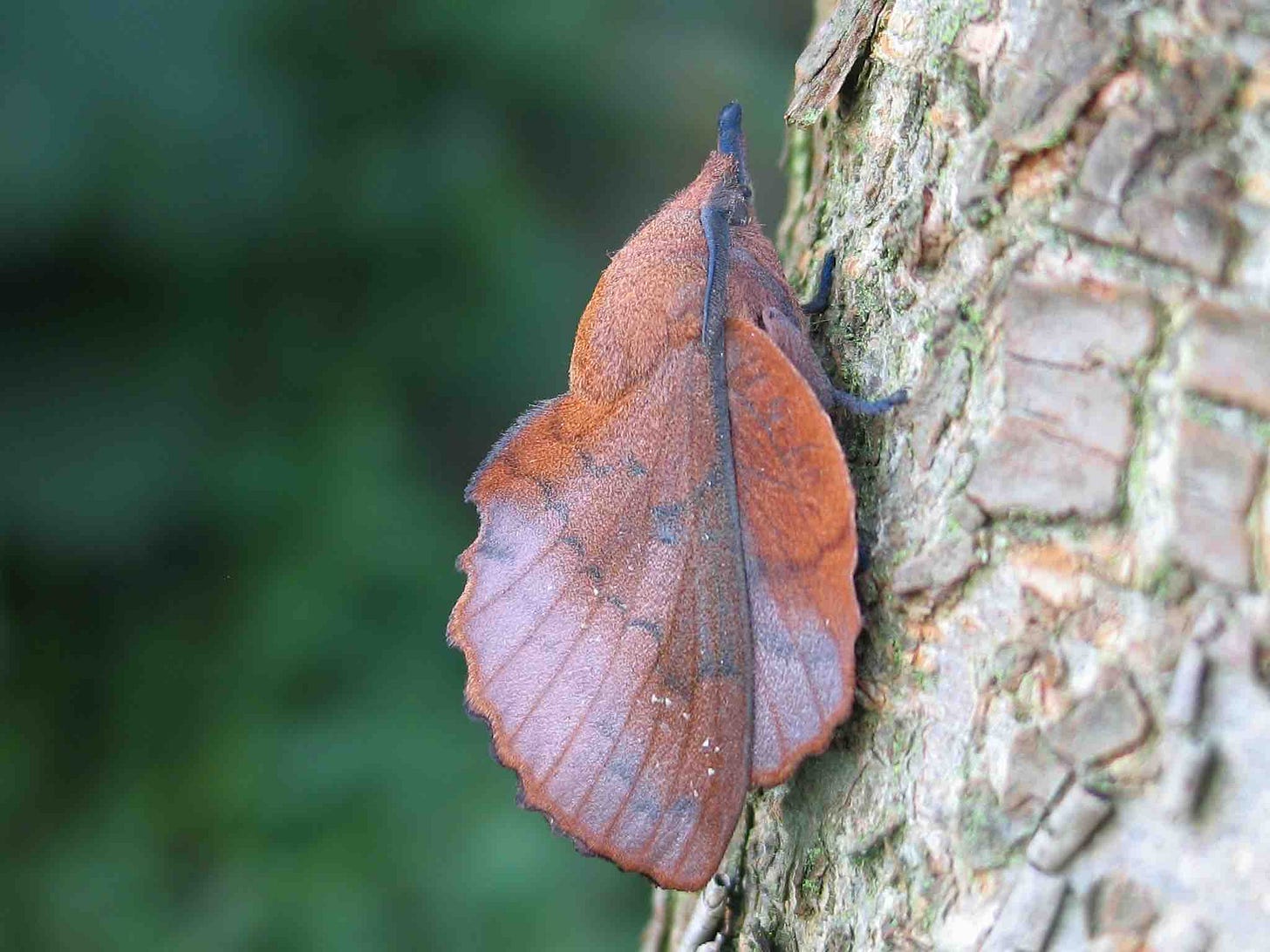No, all moths don’t eat clothes
And why you should care, says Zoë Randle of Butterfly Conservation UK
If there’s one misconception about moths that pains Zoë Randle, the senior surveys officer and Mothmatician at Butterfly Conservation in the UK, it’s this:
“People think all moths eat clothes! It drives me nuts! It’s my biggest bugbear,” she reveals.

“There are only two fairly frequent species of clothes moths which cause problems in the home: the Case-bearing Clothes Moth and the Common Clothes Moth.
“It’s not the adult moth that causes any damage, but the caterpillar stage,” she further clarifies.
“The caterpillar of the Case-bearing Clothes Moth lives within a portable case as it feeds, while those of the Common Clothes Moth feed from within flimsy white silken tubes, which can form a mat covering several larvae and can be quite noticeable when seen. They only eat natural fibres such as wool, fur and feather.
“These two species give moths in general bad press,” she stresses.
“There are around 2,500 species of moth in the UK, and only two work out to be 0.0008 per cent of moths that can cause holey jumpers! I love this statistic.”
Poor moths
I kind of get where Zoë’s coming from, because I remember my grandmother’s closet smelling strongly of mothballs. (If my memory serves me right, it was either her or an old relative, and they had pieces from the ‘70s.) And when you’re a kid, you’d be forgiven for thinking they’re terrible pests and that they deserve their bad rep.
But I wasn’t a normal kid (hehehe…) and I never took it against these species, and I never generalised or classified them all into one big awful group. (In fact, I love finding and observing them. Sometimes I even stare at them for far too long.)
If you do, though, or if you don’t think about moths at all, it’s part of Zoë’s job at Butterfly Conservation to share cool and valid points about moths so you’d understand them better.
After all, Butterfly Conservation is a non-profit organisation that’s dedicated to the conservation of butterflies and moths, which have both been experiencing a major decline over the past 40 years.
They focus on education, research and landscape restoration, with the goal of improving the two species’ habitats, ensuring their survival, and protecting their remaining numbers from the threat of extinction. The public can help by participating in monitoring programmes, volunteering, donating, and more.
They even have a campaign called #MothsMatter to help, and here are some of the reasons why.
• Moths aren’t just one thing
“Around 2,500 species of moth in the UK come in all different shapes and sizes. Many of them have interesting names,” Zoë says. (You’ll find a few of them as you read this post.)
• Moths do it better
“Moths have vital roles to play in the ecosystem as food for bats, birds and other creatures,” she adds.
“The most recent thing that has blown me away has been the discovery that they are such important pollinators – working harder over the night shift and being more efficient at pollination than bees on the day shift!
“I’ve been saying for years that moths are the bees of the night-time, and now the science has proven this statement to be true!”
• Moths are indicators of environmental change
“The decline seen in them is alarming – the 2021 State of Britain’s Larger Moths report shows that total moth abundance has declined by 33 per cent from 1968 to 2017. This is likely to be having knock-on effects on other species, particularly those that rely upon them as a food source.”
• Moths aren’t butterflies
“Moths are not all that dissimilar to butterflies; both belong to the order Lepidoptera – from the Latin ‘scale-wing’. Their wings and bodies are covered in modified hairs called scales, which look like powdery dust. The scales are arranged like roofing tiles, and as well as giving the moth its patterns and colours, they help insulate the moth.”
• Moths deserve the spotlight
If you asked Zoë to fill in a “Did you know that moths…?” question, these would be her favourite answers.
#1 Migrating Silver Y moths travel at dizzying heights and distances
“(They go) 200 to 1,000 metres above ground, covering around 300 km northward per night – and they choose favourable winds upon which to travel! If I had a superpower, it would be to fly!”
#2 Moth camouflage is incredible
“The Merveille du Jour (marvel of the day) looks like lichen and can rest on lichen-covered bark without detection,” she describes.
“The Buff-tip moth looks like a broken birch twig – imagine being able to hide in plain sight! Some species of moth, like the Chinese Character, for example, look like bird droppings – again a super camouflage tactic!
“The adult Elephant Hawk-moth is a beautiful mix of pink and olive green, and could be mistaken for an exotic species. The caterpillar looks like an elephant’s trunk, and if disturbed by a potential predator, it swells its head to look like a snake, thereby frightening the predator off,” she goes on.
“Some tiger moths have the ability to jam the sonar of hunting bats, and are also highly manoeuvrable to escape being eaten.
“We’re all too familiar with computer ‘bugs’ – but did you know this term was coined on 9 September 1947, due to a moth causing issues with the computer’s hardware? This first computer bug was discovered by computer scientist Grace Hopper. This fact resonates with me as it’s something we all continue to encounter and was discovered by a woman!”
#3 The Lappet moth looks a bit like a shrew
“Seeing my first ever Lappet moth with (TV presenter and naturalist) Chris Packham at the Big Butterfly Count launch in 2023 was very exciting, especially since Chris thought it was something else,” Zoë recalls.
Another memorable sighting worth mentioning? “While gardening, I once came across a strange-looking creature. I soon found myself watching what I discovered to be a freshly emerged Common Swift moth inflating its wings. It was an amazing experience and a sight to behold!”
• Moths should be written about more
“The publication of the Atlas of Britain and Ireland’s Larger Moths in 2019 was a significant milestone for moths and the moth recorders who gather valuable data,” Zoë says.
“This was the first book detailing moth distribution maps, flight charts, and trends of the larger moth species found in Britain and Ireland’s larger moths.”
What is Zoë’s favourite moth?
“The Elephant Hawk-moth, as it is beautifully coloured (pink and green), which gives it an exotic appearance.”
By the way, what is a Mothmatician?
So far we’ve talked about the moth’s many amazing qualities, but I can’t help but go back to this.
If the term “Mothmatician” caught your eye like it did mine, what do they do? And what is working with moths like? (Because I think it’d be interesting.)
“It is super working with moths – they are undervalued and often feared by some people,” Zoë observes.
“I enjoy giving talks to a wide range of people about moths, their importance as food for other creatures, pollination, and the perils they face in the modern world. I primarily work with the volunteer County Moth Recorder network; these people are true experts in moth identification and local distributions. They’re the key link between the moth recording community – of which anyone with an interest in moth recording can become a part of – and the National Moth Recording Scheme (NMRS).
“County Moth Recorders collate and check the accuracy of the moth records in their areas prior to sending them to the NMRS,” she continues.
“The valuable data they collate, check and submit to the NMRS forms the basis for all of our conservation work, as you need to know where the species are to be able to conserve them.
“Being part of the NMRS is a great honour, as is supporting the County Moth Recorder network to help them in their volunteer role. It is great to fight the cause for the underdog of the Lepidopteran world!”
You can be a Mothmatician too, in a way
Because now that we’re more familiar with the moth’s importance, why can’t we begin to support them and their conservation the soonest?
Even if we can’t become a full-fledged Mothmatician like Zoë, there are a few moth conservation tips we can follow that she believes are effective – and totally doable for the average person.
#1 Consider caterpillar food plants
“Growing caterpillar food plants in your garden is a good way to encourage the beasties to visit and live in your garden,” she says.
“I’ve experienced this with growing Mullein in my garden, and it didn’t take long to see the voracious Mullein moth caterpillars munching on the Mullein. In addition, I trapped the adult moths, which are not as striking as the caterpillars, in my moth trap.
“It was a great feeling knowing that I’d planted something and provided a home in my garden for this species. There are lots of information on the Butterfly Conservation website about caterpillar food plants to grow for moths.”
#2 Tell people
“Keep spreading the word with friends and family about how amazing moths are! Join your local moth group and/or Butterfly Conservation branch and get in touch with your County Moth Recorder so you can meet and talk to other moth enthusiasts.”
#3 Start recording
“Recording moths and submitting your sightings is really important. The data is used by Butterfly Conservation and our conservation partners to help conserve moths. The more information we have, the more conservation work we can do to understand patterns of change and work to halt the decline in moths.” Maybe then we can relate to moths and see how they experience the world.
But they’re actually quite straightforward, according to Zoë. “I think moths are simply getting on with the important things in their lives – feeding, pollinating, breeding, and avoiding being eaten!”
It’s another life lesson we can learn from the moth as we help and appreciate them, right?
Find Butterfly Conservation here and on Facebook and Instagram.
The Butterfly Conservation projects close to Zoë’s heart
If you want to give moths a chance, you can find out more about how to contribute here.
• The National Moth Recording Scheme (NMRS)
“The NMRS was launched in 2007 to create a UK database of moth records to help conservation. You cannot conserve something unless you know where it is found,” Zoë says.
“Anyone can contribute to the NMRS: If you see a moth and you can identify it, you can enter your sighting. The NMRS collects records of adult moths, caterpillars and other life stages. The NMRS database is used by Butterfly Conservation, our conservation partners and scientific researchers to assess the status of moths, inform conservation on the ground, and help us understand the patterns and drivers of change in our moth species.”
• The UK Moth Recorders’ Meeting
“This is an annual event that enables people to get together and find out the latest information on moths, moth recording, conservation and scientific research,” she elaborates.
“It is open to everyone and anyone who is interested in moths; it’s an event to add to your diary.”







